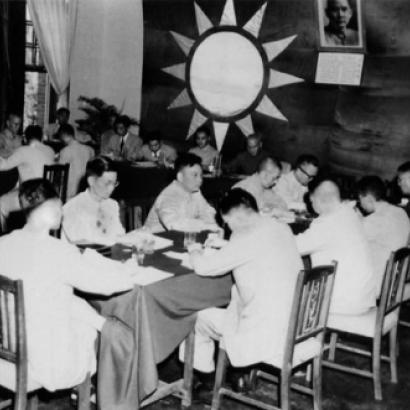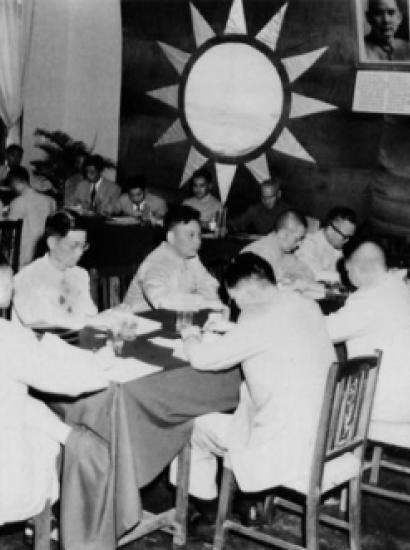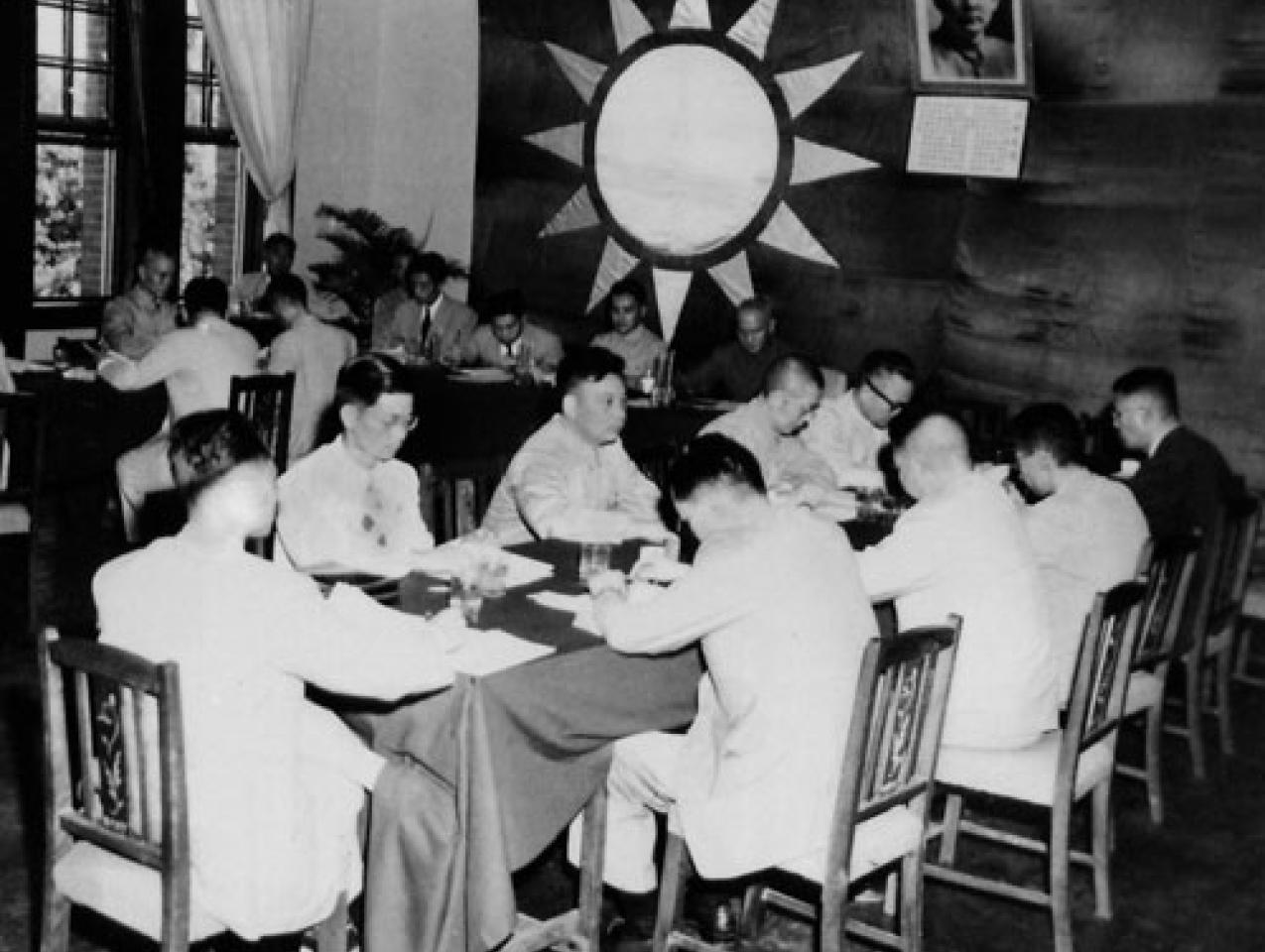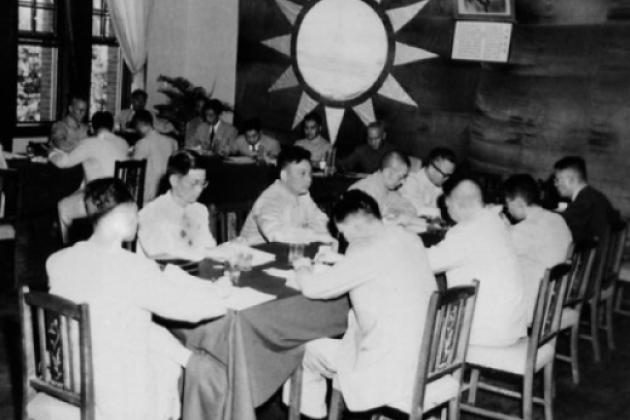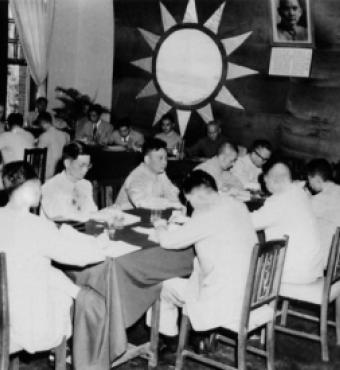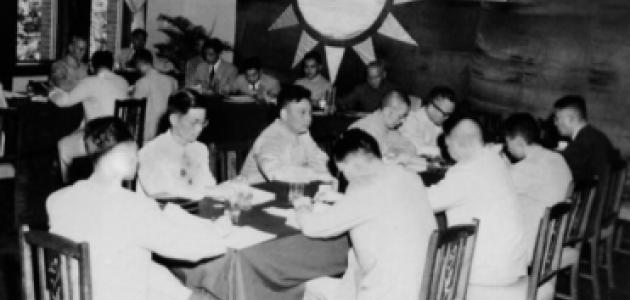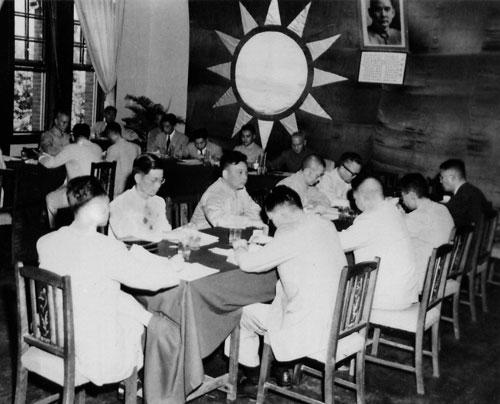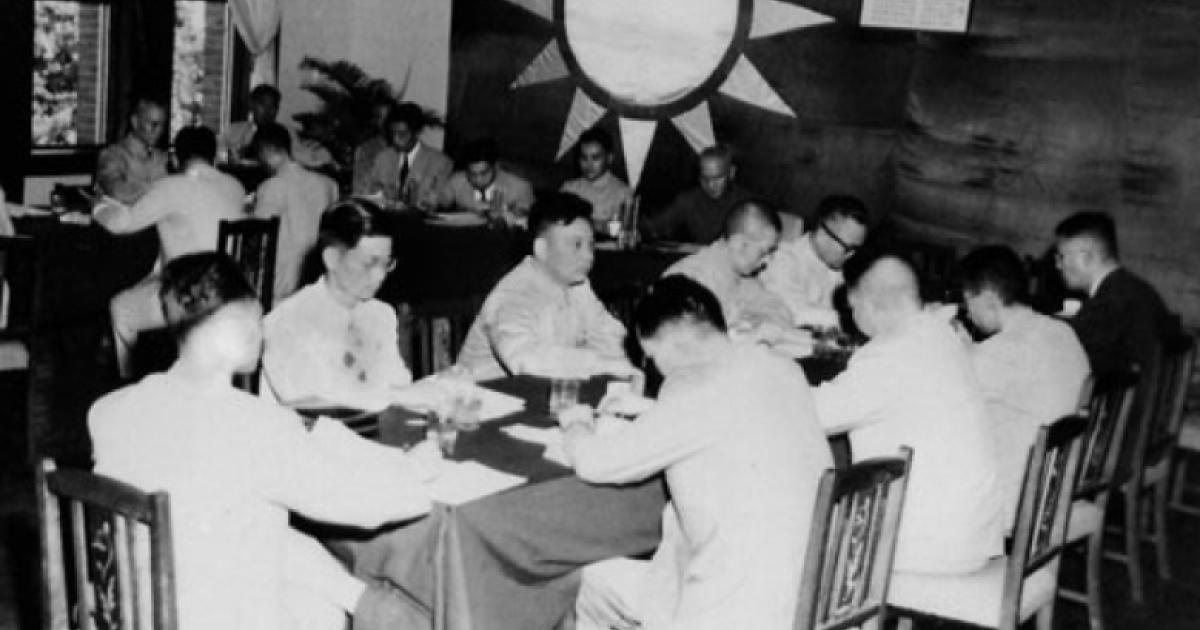- World
- US
- Contemporary
- International Affairs
- History
It was one of the twentieth century’s great surprises: on June 27, 1950, President Truman ordered the Seventh Fleet into the Taiwan Strait to prevent the Chinese civil war from leaping across to the island of Taiwan, then known as Formosa. “The occupation of Formosa by communist forces,” Truman said, “would be a direct threat to the security of the Pacific area and to United States forces” in the area; he also called on the “Chinese government on Formosa to cease all air and sea operations against the mainland.” Truman announced that Taiwan’s future “must await the restoration of security in the Pacific, a peace settlement with Japan, or consideration by the United Nations.”
Chiang Kai-shek owed his regime’s survival to the Korean civil war, which had erupted two days earlier. Suddenly protected from complete defeat after his 1949 rout by Mao’s communist forces on the mainland, Chiang was handed a new start—along with a surge in American military and economic aid that gave Chiang, his military forces, his followers, and thousands of refugees from the mainland enough time to establish a new party and state that would radically change Taiwan and the Asian-Pacific region.
The Hoover Institution has recently received records from the Kuomintang (KMT) party archives in Taipei that provide a clearer understanding of how the discredited Chiang Kai-shek and his son, Chiang Ching-kuo, along with half a million Chinese soldiers and some 2 million Chinese refugees, re-established the Republic of China on Taiwan.
THE GENERALISSIMO RETREATS
Chiang and his son had flown to Canton (Guangzhou) in 1949, as Mao’s army closed in, to meet with Central Standing Committee members of the KMT and to launch a party reform movement. The Chiangs were told that effective party reform was out of the question. They then flew to Sichuan in southwest China, where again local elites gave only a lukewarm response to Chiang’s idea of initiating a thorough party reform and building a last anticommunist power base in the southwest. In despair, father and son fled to Taiwan as the year ended, never to set foot on the mainland again.
During the next months, Chiang assembled his military officers, ordered Chinese troops on Hainan Island and along the coast of Zhejiang and Fujian provinces to retreat to Taiwan, and planned for the island’s defense against a communist attack.
In June 1950, the Korean War brought a surge of U.S. aid and attention to Chiang.
An atmosphere of defeat hung over the island. Leading officials argued with each other and with their commander. Chiang quarreled with Premier Chen Cheng over who should control state finances. Taiwan’s governor, K. C. Wu, threatened to resign. The legislative and executive branches of the central government were at each other’s throat; members of powerful cliques refused to pass an emergency bill giving the Executive Yuan more power.
As early as the summer of 1947, Chiang had been thinking about reforming the KMT. Party factional struggles were epidemic. After the war with Japan ended, the C.C. Clique, controlled by the Chen brothers (Guofu and Lifu), was so powerful that it threatened to divide the Nationalist government. In 1948 and 1949, local party branches were collapsing and people were fleeing to Taiwan. Writing in his diary in January 1949, Chiang blamed the party’s collapse on his and others’ failed efforts: “We never established a new, solid organization.”
Chiang realized that his inner circle of party and state officials could not be trusted. He had little faith that his military officers would defend Taiwan. On May 31, 1950, he complained that “party members are rude and unreasonable. In their minds they no longer cared about the survival of our party and state. I must focus on party rectification to ensure our survival. Without complete party reform, there is no way to save the nation.”
A POLITICAL HOUSECLEANING
Then came June 25, 1950, when Chiang learned that civil war had broken out on the Korean Peninsula. He knew that the time was ripe.
His first step was to retire his enemies. Chiang created a Central Advisory Committee, a new organization to be staffed with the political leaders he detested and wanted removed from political life. Chiang bestowed prestige on this honorary body but gave it no political power or responsibility, and he quickly transferred all leading members of the C.C. Clique, the Guangxi Clique, and the Zhengxue Clique to it.
Chiang expected his revived party to lead the state, provide guidance for a market economy, protect Taiwan from communism, and create a Han Chinese society. He saw himself as a benevolent father figure.
Chiang then set up a Central Reform Committee, loyal to him, with real power to lead his new political party. In June–July of 1950 he carefully selected its sixteen members, ordering background checks of candidates and consulting with his close friends. With an average age of 47, this younger generation of leaders was also well educated: nine had bachelor’s or master’s degrees in engineering and economics, and several had studied abroad. Two had doctorates from American universities. Those sixteen became his inner council.
What was their vision for China’s and Taiwan’s future? Chiang advanced six principles:
First, the Kuomintang was a revolutionary-democratic party that supported a small, limited electoral democracy.
Second, the party must reach out to all people of Taiwan, poor or rich, unskilled or professional.
Third, party members must adhere to democratic centralism, in which all members obey the decisions by the top leadership.
Fourth, party members must participate in work teams or cells to centralize and inform the new party.
Fifth, all members must submit to the leadership standards approved by Chiang Kai-shek.
Finally, the party’s doctrine was that of Sun Yat-sen’s Three Principles of the People (nationalism, democracy, and social welfare).
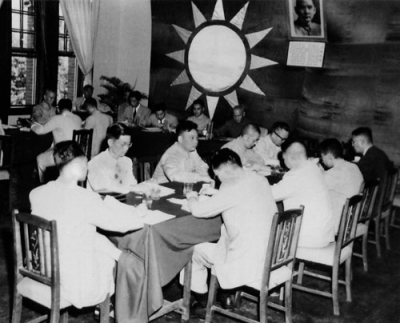
Chiang first trained his reform committee in these six principles and emphasized a pragmatic interpretation of Sun’s eclectic doctrine. He elaborated on the Three Principles by laying out these goals: to harmonize China’s many ethnic groups by focusing on a Han Chinese identity; to monopolize political power in the KMT to prepare Chinese society for, first, a limited democracy led by the KMT, and later, a constitutional republic whose citizens understood their rights and obligations and would practice them in a new democracy; and finally, to design an economy in which the state played a facilitating role in industrializing society.
The new KMT concluded that it must “Sinicize” Taiwan if it were ever to unify mainland China. Textbooks were designed to teach young people the dialect of North China as a national language. Pupils also were taught to revere Confucian ethics, to develop Han Chinese nationalism, and to accept Taiwan as a part of China.
The Kuomintang leadership wanted Taiwan to serve as the model for how mainland China’s Communist Party might someday reform China.
The party would establish an election system for local leaders and representatives, but Chiang would not allow other parties to compete. He also decided to freeze the Republic of China’s 1947 constitution as long as martial law remained in force on Taiwan.
BUI LDING THE PARTY
Chiang saw himself as a benevolent authoritarian, a father teaching his family how to build democracy, nationalism, and a thriving economy while strengthening Confucian moral precepts.
He was now signing off on all state legislation and decisions by the new party. As early as July 16, 1950, he was optimistic about the reformed party becoming an instrument of his power. He wrote in his diary that “the Resolution for Reforming the Party has been adopted, and we have announced the new members of the Central Reform Committee. Indeed, this development is a gigantic event in the history of our revolution. This is the final remedial action we will take to resuscitate our dying KMT. Once we pass this crucial test, the obstacle blocking our revolutionary achievements will be behind us and seem trivial.”
Chiang assigned to each member of his executive committee such tasks as recruiting loyal party members, extending control and influence into Taiwanese villages, and consolidating the party’s new belief system. He established a party cadres school, the Academy for the Study of Carrying Out Revolution, at Yanming Mountain north of Taipei. In its first thirty months, more than 3,000 elite cadres graduated after four to six weeks of training, and were sent to newly formed party branches around the island. As head of the academy, Chiang urged students to undergo “inner” changes by purging themselves of “selfishness, corruption, and the propensity to bureaucratize.” Chiang reminded them they must be ready to lay down their lives for the revolutionary task of putting into practice Sun’s Three Principles. Generations of cadres would be trained at this location with the textual materials provided by Chiang Kai-shek; only those who participated in the course would be eligible for high positions in the party or government.
A RESTORED KUOMINTANG LOOKS AHEAD
By October 1952, when the Seventh Party Congress convened, the revived party had recruited 282,000 members. The Central Reform Committee’s role officially came to an end. By the late 1950s, party membership had reached nearly 1 million.
In the years ahead, the Kuomintang continued its authoritarian rule and remained committed to the eventual unification of China under the principles advanced by Chiang Kai-shek and Sun Yat-sen. The KMT, rescued from demoralization and failure, could now exert its influence on the government and society in a way it never could while on the mainland.
How this authoritarian party established legitimacy within Taiwan and persuaded Taiwan’s elites to embrace the Chinese vision for Taiwan’s future is another story. As the newly available KMT archival materials at Hoover indicate, social interaction between Taiwanese and mainland Chinese gradually improved relations between the two groups of ethnic Chinese in the 1950s. The Kuomintang leadership wanted Taiwan to serve as the model for how mainland China’s Communist Party might someday seek to reform China. As Chiang Ching-kuo said in 1986, “We must use the doctrine and spirit of Sun Yat-sen to unify China and Taiwan.”








